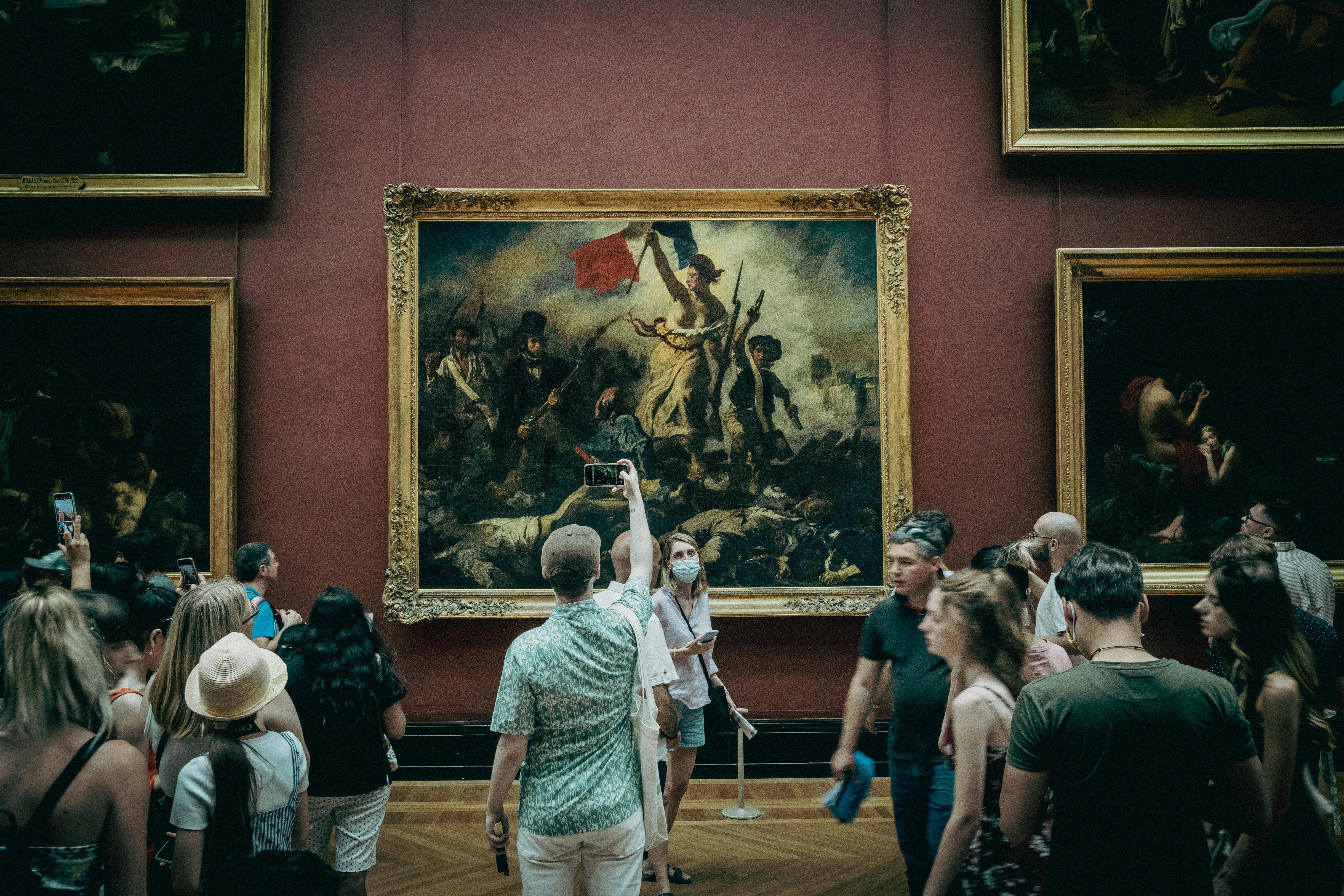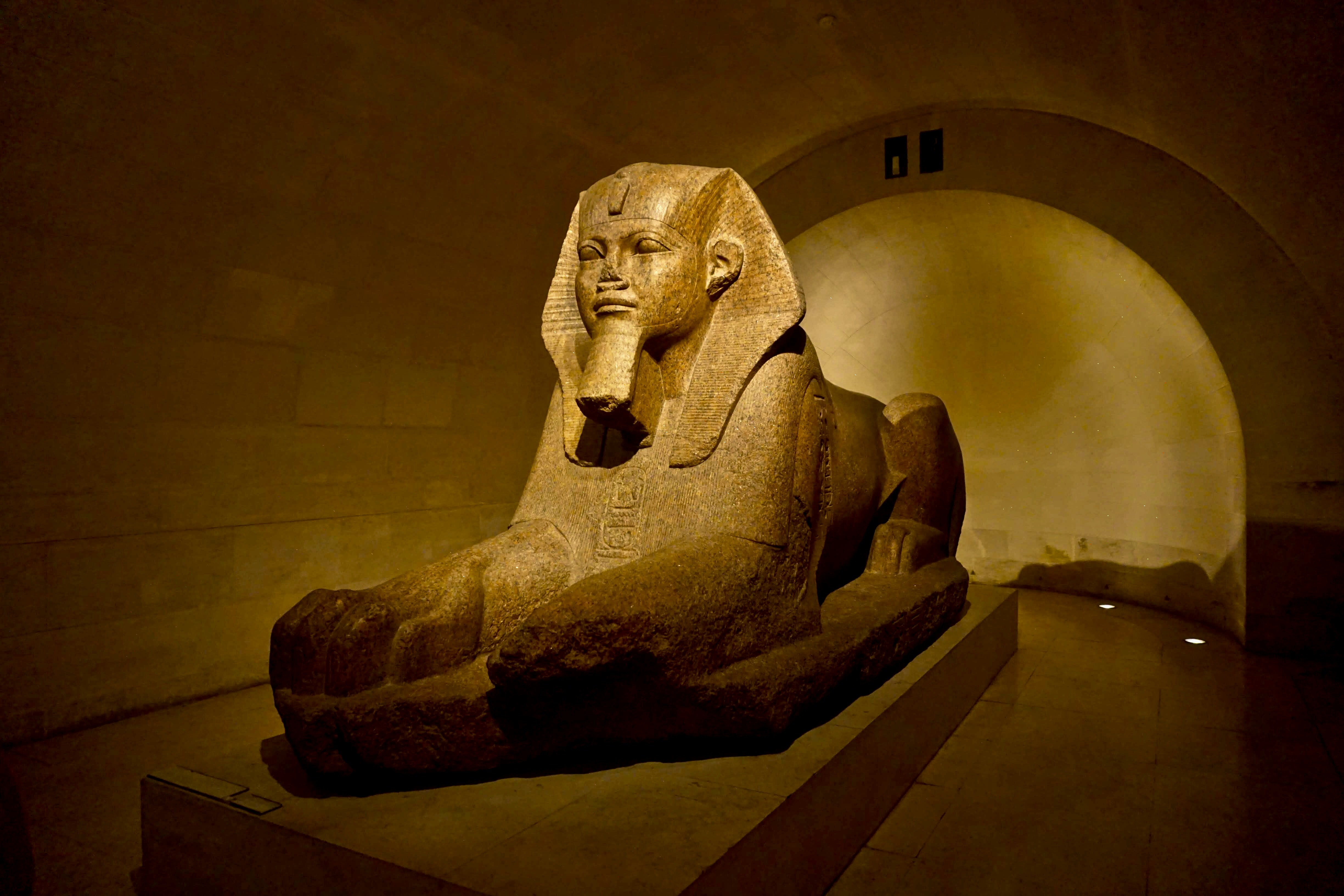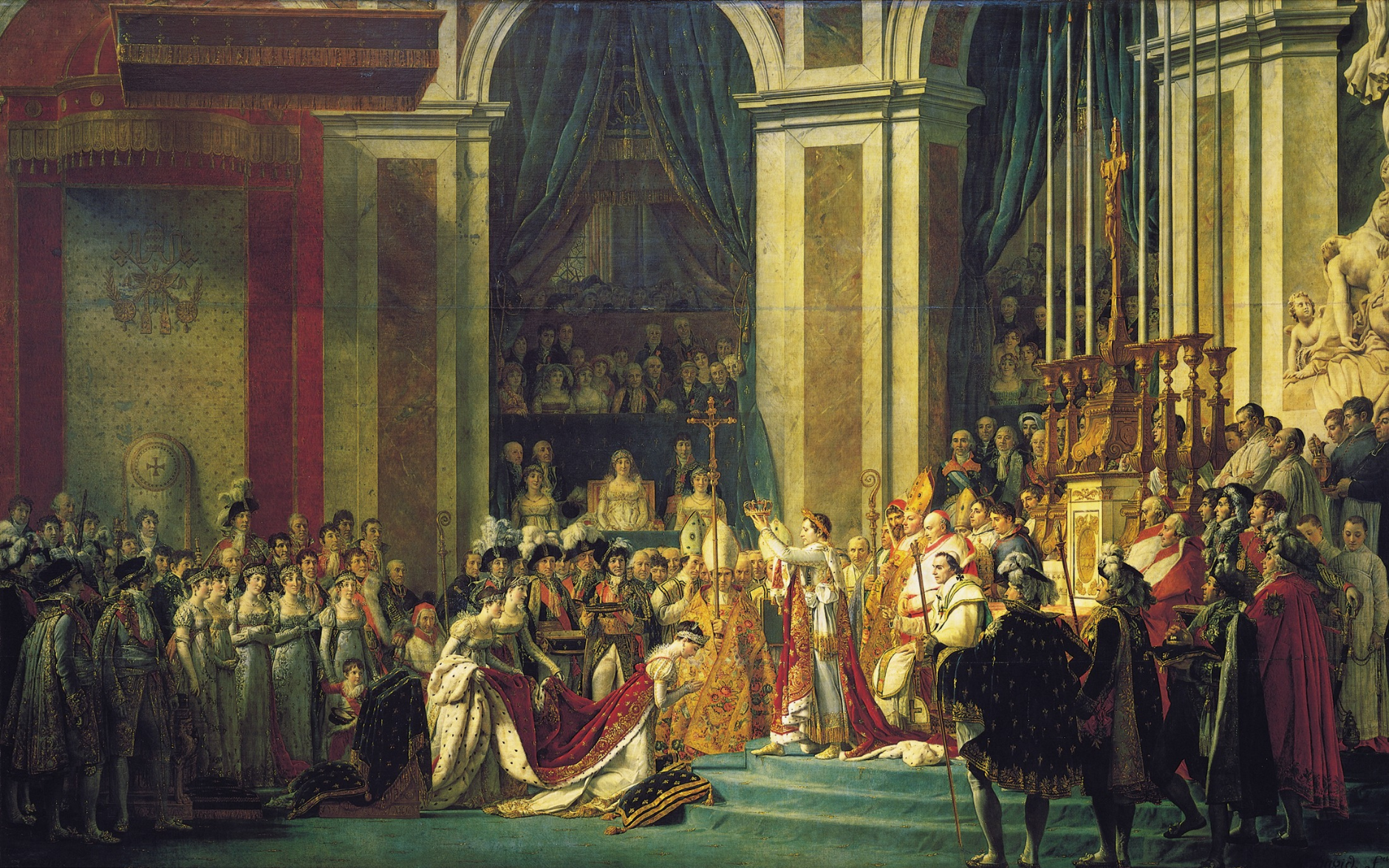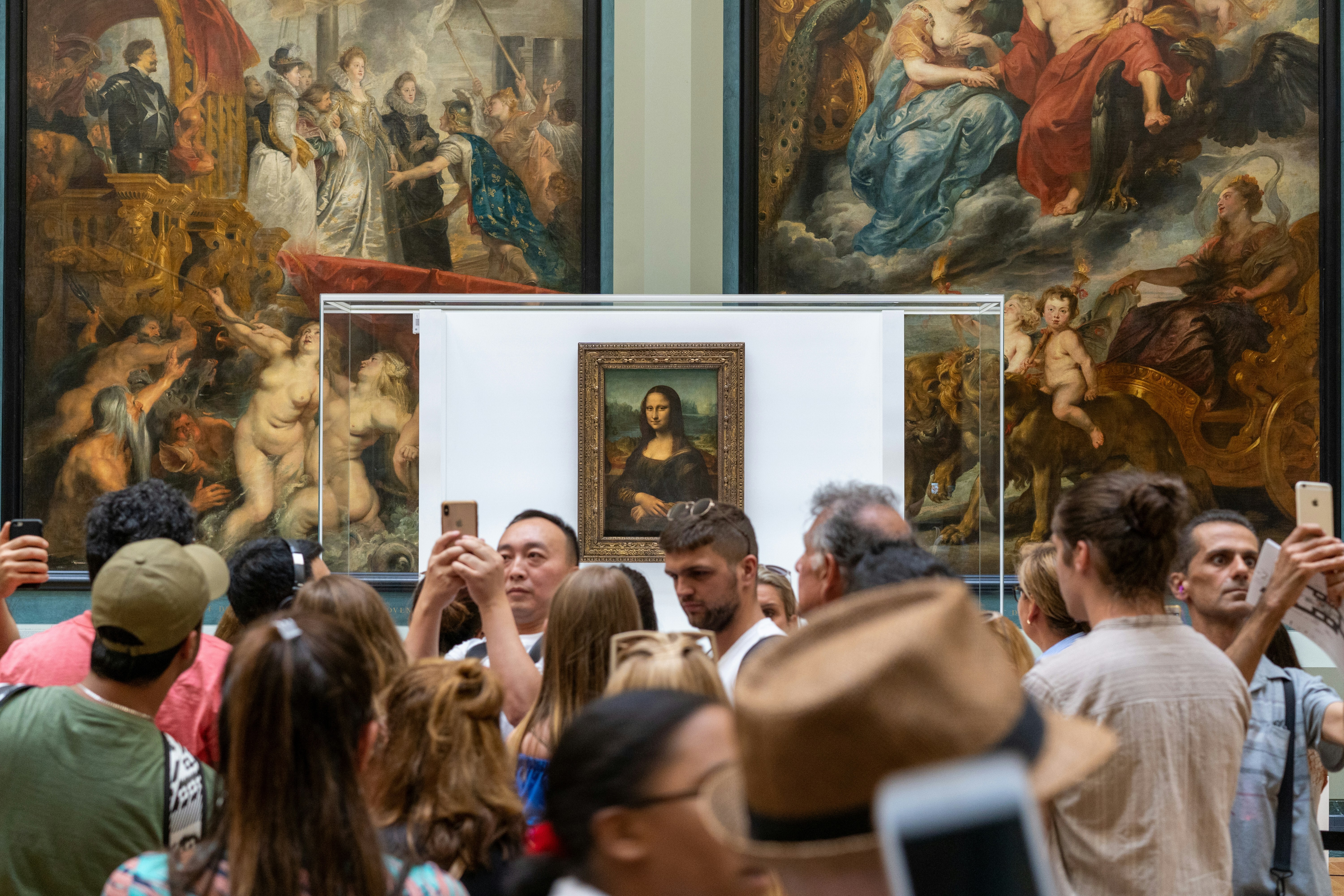Which famous artworks are in the Louvre?
Posted by Josh on 27th Oct 2025 in the blog in the french culture category
The Louvre is arguably the most famous art gallery in the world, attracting nearly ten million tourists each year - not to mention the occasional jewel thieves.
Last week, a gang of burglars broke into the Louvre, making off with €88 million worth of precious jewellery, including an emerald necklace and earrings belonging to Empress Marie Louise and a tiara and brooch belonging to Napoleon III's wife, Eugénie. On Sunday, two suspects were arrested, but the investigation into what is turning out to be one of the most notorious heists in French history continues.
The items are extremely valuable and historically significant, but they represent just a small selection of the hundreds of thousands of objects in display in the Louvre, from jewels and crowns to paintings, books, statues, mummies and much more. If you visit the Louvre, you could easily spend a day walking round the vast museum and even more easily get lost.
If you'd rather admire the display items from the comfort of your own home, or even if you just want to get a sense of what's in the museum before visiting in person, then why not take a look at some of the museum's most precious artworks, which we've listed below.
Liberty Leading the People
The most famous painting of the July Revolution of 1830, Eugène Delacroix’s masterpiece can be found in the the Louvre's Hall Napoléon. The painting depicts a personification of Liberty leading the revolutionaries to victory against Charles X, brandishing a tricolour and wearing a Phrygian Cap. The painting remains deeply symbolic and embedded in French culture, which is partly why the Phrygian Cap was the mascot for the 2024 Paris Olympic Games, and why the scene depicted in the painting was recreated during the Opening Ceremony.
Moai
The moai are giant heads cut sculpted from volcanic rock. There are estimated to be over 1,000 moai in existence, all originating from Easter Island, although a handful have been relocated. These include ones now housed in the British Museum, the Smithsonian Institution in the United States and, of course, the Louvre. They are thought to be between 500 and 750 years old and weigh up to 86 tonnes.
Despite common perceptions, most of the moai are full-body statues. Many of them were discovered buried up their necks in the soil, however, hence the popular image of the 'Easter Island heads'. The one housed in the Louvre is just a head, but it's still very impressive to see up close.
Archaeologists believe the moai represent the ancestors of the Rapa Nui people who created them, and that they held special religious significance.
The Caryatids
Originally a ballroom, the Salle des Cariatides is a gorgeous space at the heart of the Louvre, built in the Renaissance style. It is now host to an impressive assortment of copies of classical Greek statuary, but the 16th century caryatids remain, holding up the balcony and flanking the exit. They are incredibly ornate and detailed, and it's easy to forget that they're part of the museum itself as you walk past them.
Sphinx of Tanis
The Louvre was the first place to house a museum to Egyptology, opened nearly 200 years ago in 1827. In here you'll find mummies, turquoise statuettes, walls covered in hieroglyphics - and the famous Sphinx of Tanis.
Estimated to be around 4,000 years old, the sphinx is a deeply mysterious creation: a lion with the head of a human. This hybrid creature famously appears in Sophocles' Oedipus Rex, where it present riddles to passers-by; but archaeologists are yet to solve the riddle with this particular sphinx. Which king commissioned it? Why and when, exactly, was it built? Why was it moved throughout Egypt several times before it reached its resting place in Tanis? We don't know the answers to these questions, which is what makes it so intriguing.
Et in Arcadia Ego
Les Bergers d’Arcadie ('The Shepherds of Arcadia') is more often known by the epigraph on the tomb depicted in the painting: 'Et in arcadia ego'. If you're worried your French is failing you, then don't be; the inscription is in Latin, and means 'I am even in Arcadia'. Like many of the other items on this list, part of what appeals about Poussin's painting is its mysteriousness. What are the characters meant to represent? Who is the 'ego' in the tomb's inscription?
One interpretation is that it is death referring to itself, reminding us that mortality is ever-present even in the paradise of Arcadia. And it certainly is a paradise, as Poussin's playful colours and wistful pastoral setting remind us, balancing dark and light, danger and beauty.
The Coronation of Napoleon
The Coronation of Napoleon depicts the moment when Napoleon Bonaparte crowned himself Emperor in Notre-Dame cathedral. We can assume it is a faithful depiction, since the artist Jacques-Louis David, 'First Painter to the Emperor', was present at the scene. Among the people present in the scene are Napoleon, Pope Pius VII, Talleyrand and Joséphine de Beauharnais, Napoleon's wife.
It's an iconic painting, and was even recreated for a scene in the film Napoleon.
Code of Hammurabi
The Louvre is home to more than just artworks, although some would happily call one of the foundational texts on legal justice ‘art’. The Code of Hammurabi is a stele which at its top depicts the 18th century BC Babylonian king Hammurabi kneeling before Shamash, the god of justice. Below the relief is a text inscribed in Akkadian, including a series of laws which Hammurabi used to govern Babylon.
Among the laws given are 'If an ox gores to death a man while it is passing through the streets, there is no legal basis for claims' and 'If a man breaks into a house, they shall kill him and hang him', as well as the well-known 'If someone is to blind the eye of another, they shall blind his eye'. It's a far cry from modern French legal system, which probably won't be quite as harsh on the Louvre burglars, but it's a stark reminder of how crude the earliest laws were.
The Mona Lisa
We haven't forgotten the most famous item in the Louvre: the Mona Lisa.
According to the museum itself, 80% of the museum-goers will make sure to see this (surprisingly small) painting on their trip around the building. It's arguably the most famous painting in the world, and not just the Louvre, partly due to Leonardo da Vinci's innovative sfumato technique, partly due to the enchanting, enigmatic smile of its subject. The identity of the sitter is also a mystery, although people have their theories.
The painting was stolen in 1911 by a man dressed as a museum employee, a feat which only made the smiling lady more famous. The painting was recovered and returned a couple of years later. We don't know Vincenzo Peruggia's motivations, but some believe he may have been trying to repatriate the artwork to Italy, where it was painted.
Given that Leonardo was an Italian, people often wonder why the Mona Lisa ended up in the Louvre. Museums often host artworks and artefacts from all over the world, but the Mona Lisa has in fact been in Paris for the past 500 years (barring the occasional tour and those two years when it went missing). King Francis I had invited Leonardo to France in 1518 and purchased the painting from him directly, although it wasn't until the French Revolution, when the royal collections were ransacked, that the painting was finally displayed in public - not before a brief period hanging in Napoleon Bonaparte's bedroom, of course.
Check out some of our other blog posts!
Learning French from A0 to C2
Posted on by Nancy in the learning french categoryOne of the most popular questions we receive at Learn French with Alexa is "how soon after starting your subscription course, can I jump from CEFR level A0 to C2?" It seems you all want to learn French as fast as lightning. Whether for a holiday, career prospects or a move, everyone is in a hurry. Unfortunately, French is a language that takes time to learn effectively.
Read moreHow much does it cost to take the TEF exam?
Posted on by Josh in the frequently asked questions, tef categoryThe answer depends on where you're taking the exam, and which version of the TEF you want to take
Read moreHave fun learning French Today
People from all over the world enjoy learning French with Alexa Polidoro’s popular French audio and video lessons.






